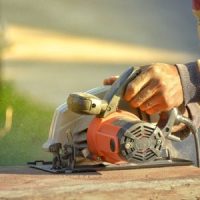Sawing Injuries in Construction Work

Construction workers and builders frequently need to use saws to complete work tasks. Some types of saws are hand saws and are only operated with the user’s force rather than through electrical or battery power. While any type of saw can result in injuries, including hand saws, power saws tend to be much more hazardous. Power saws may be operated with electricity, rechargeable batteries, and sometimes even with gasoline when the power saw has a gas motor. As Trees.com explains, power saws are “great for efficiency and precision,” and they “help to complete cutting jobs much more quickly than hand saw equivalents.” At the same time, however, they are often extremely dangerous and require proper training.
Construction sites often have a wide variety of saws, and saw-related injuries can result in permanent disabilities. If you were injured on a construction site while using a saw, it is important to find out more about seeking workers’ compensation benefits. One of our Pompano Beach workers’ compensation lawyers can help you.
Types of Saws Commonly Used in Construction Work
In building and construction work, many different types of saws can be used. In limited situations, hack saws, crosscut saws, and bow cut saws may be used, but power saws are more common. Some of the types of power saws that are used frequently, according to Trees.com, include:
- Circular saw;
- Miter saw and compound miter saw;
- Jigsaw;
- Band saw;
- Table saw;
- Chainsaw;
- Chop saw;
- Flooring saw;
- Panel saw;
- Oscillating saw;
- Radial arm saw;
- Scroll saw;
- Pole saw;
- Tile saw;
- Reciprocating saw;
- Rotary saw; and
- Track saw.
Injuries in Sawing Accidents
Given that saws have large blades and that power saws are extremely forceful, these tools can cause devastating injuries. Most often, saw accidents are responsible for some of the following types of injuries according to the Journal of Trauma Managements & Outcomes and Plastic Reconstructive Surgery journal:
- Cuts and lacerations;
- Traumatic amputations;
- Tendon and bone damage;
- Nerve damage; and
- Scarring and disfigurement.
Where on the body do these injuries occur most frequently?
- Finger injuries;
- Hand injuries;
- Arm injuries;
- Leg injuries;
- Foot injuries;
- Toe injuries; and
- Facial injuries.
How to Seek Workers’ Compensation Coverage After a Saw Injury
In order to seek workers’ compensation coverage following a saw accident and injury in construction, you will need to report the injury to your employer no later than 30 days from the date of the injury. It is important to pay attention to this deadline.
You will also need to follow the rules for medical care. With many saw accidents, the injury requires immediate emergency treatment since these accidents frequently result in severe and life-threatening lacerations or amputations. You can see any provider for an initial emergency visit, but follow-up care will need to be with an approved provider. A workers’ compensation lawyer can tell you more and can help to ensure that you meet all requirements for coverage and benefits.
Contact a Pompano Beach Workers’ Compensation Lawyer
Do you have questions about seeking compensation for a saw-related injury in construction work? One of the experienced Pompano Beach workers’ compensation attorneys at the Law Offices of David M. Benenfeld, P.A. is here to help you today.
Sources:
trees.com/gardening-and-landscaping/types-of-saws
leg.state.fl.us/statutes/index.cfm?App_mode=Display_Statute&URL=0400-0499/0440/0440ContentsIndex.html

